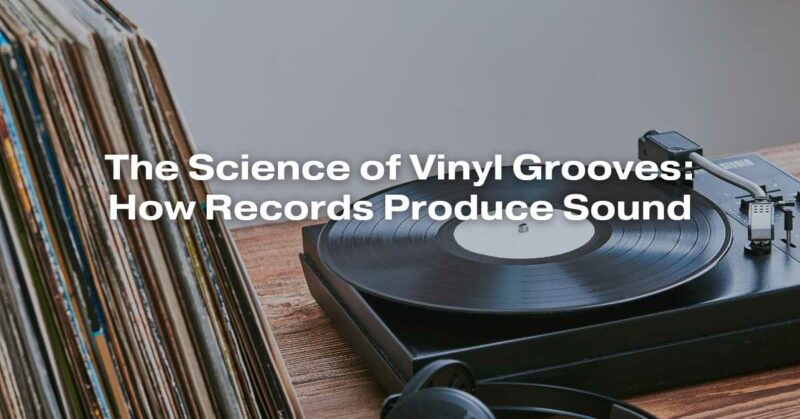Vinyl records have enjoyed a resurgence in popularity in recent years, captivating audiophiles and music enthusiasts alike. These iconic analog music carriers have a unique charm that digital formats simply can’t replicate. But have you ever wondered how vinyl records produce sound? In this article, we’ll delve into the fascinating science behind vinyl grooves, exploring how they work to create the music we love.
The Basics of Vinyl Records
Before diving into the science, let’s start with the basics. Vinyl records are made of polyvinyl chloride (PVC) and consist of circular discs with grooves spiraling from the outer edge to the center. These grooves contain the encoded information that represents the audio content. When a stylus (needle) is placed in the grooves and the record is spun on a turntable, magic happens.
The Anatomy of a Vinyl Groove
Vinyl grooves aren’t just random lines etched onto a surface. They’re carefully crafted to encode the analog audio signal. Let’s break down the key elements of a vinyl groove:
- Modulation: The grooves contain microscopic variations in depth and width. These variations correspond to the changes in the audio waveform. When a stylus runs through these modulations, it translates them into electrical signals.
- Pitch and Amplitude: The vertical movement of the stylus (up and down) corresponds to changes in pitch, while the lateral movement (side to side) represents changes in amplitude. The stylus follows these movements, mimicking the original audio signal.
- Stereo and Mono: Stereo records have two grooves, one for the left channel and one for the right, while mono records have a single groove. The stylus assembly is designed to accommodate both mono and stereo playback.
- Vinyl Composition: The material and quality of vinyl used impact the sound quality. High-quality vinyl records use pure vinyl, while cheaper ones may contain fillers that can affect sound fidelity.
How Sound is Produced
Now, let’s explore how these grooves actually produce sound:
- The Turntable: The turntable, also known as a record player, rotates the vinyl record at a precise speed, typically 33 1/3 RPM or 45 RPM for LPs and singles, respectively.
- The Stylus: A stylus, typically made of diamond or sapphire, is attached to a tonearm. This stylus is delicately placed into the groove of the vinyl. As the record spins, the stylus follows the groove’s modulations.
- Mechanical Motion: The stylus’s interaction with the groove modulations results in mechanical vibrations. These vibrations are transmitted through the tonearm to a cartridge.
- Cartridge and Transduction: The cartridge contains a small magnet surrounded by coils of wire. As the stylus vibrates, it induces changes in the magnetic field around the magnet. This induces an electrical current in the coils, essentially converting the mechanical vibrations into an electrical signal.
- Phono Preamp: The weak electrical signal generated by the cartridge needs to be amplified and equalized. This is where a phono preamplifier (phono stage) comes into play. It boosts the signal and corrects for the RIAA equalization curve used in vinyl recording.
- Amplification and Playback: The amplified signal is then sent to a power amplifier and eventually to the speakers, where it is converted back into sound waves that we can hear.
The Importance of Vinyl Quality
The sound quality of vinyl records depends on various factors, including the quality of the mastering, the vinyl pressing process, the condition of the stylus, and the quality of the playback equipment. Audiophiles often invest in high-end turntables, cartridges, and speakers to maximize the audio quality from their vinyl collection.
Conclusion
The science of vinyl grooves is a testament to the ingenuity of analog audio technology. Vinyl records continue to captivate listeners with their warm, authentic sound. From the carefully etched grooves to the delicate stylus, the process of producing sound from vinyl is a delicate dance of physics and engineering. So, the next time you place a vinyl record on your turntable, take a moment to appreciate the intricate science behind the music, and enjoy the rich, analog experience that vinyl has to offer.


